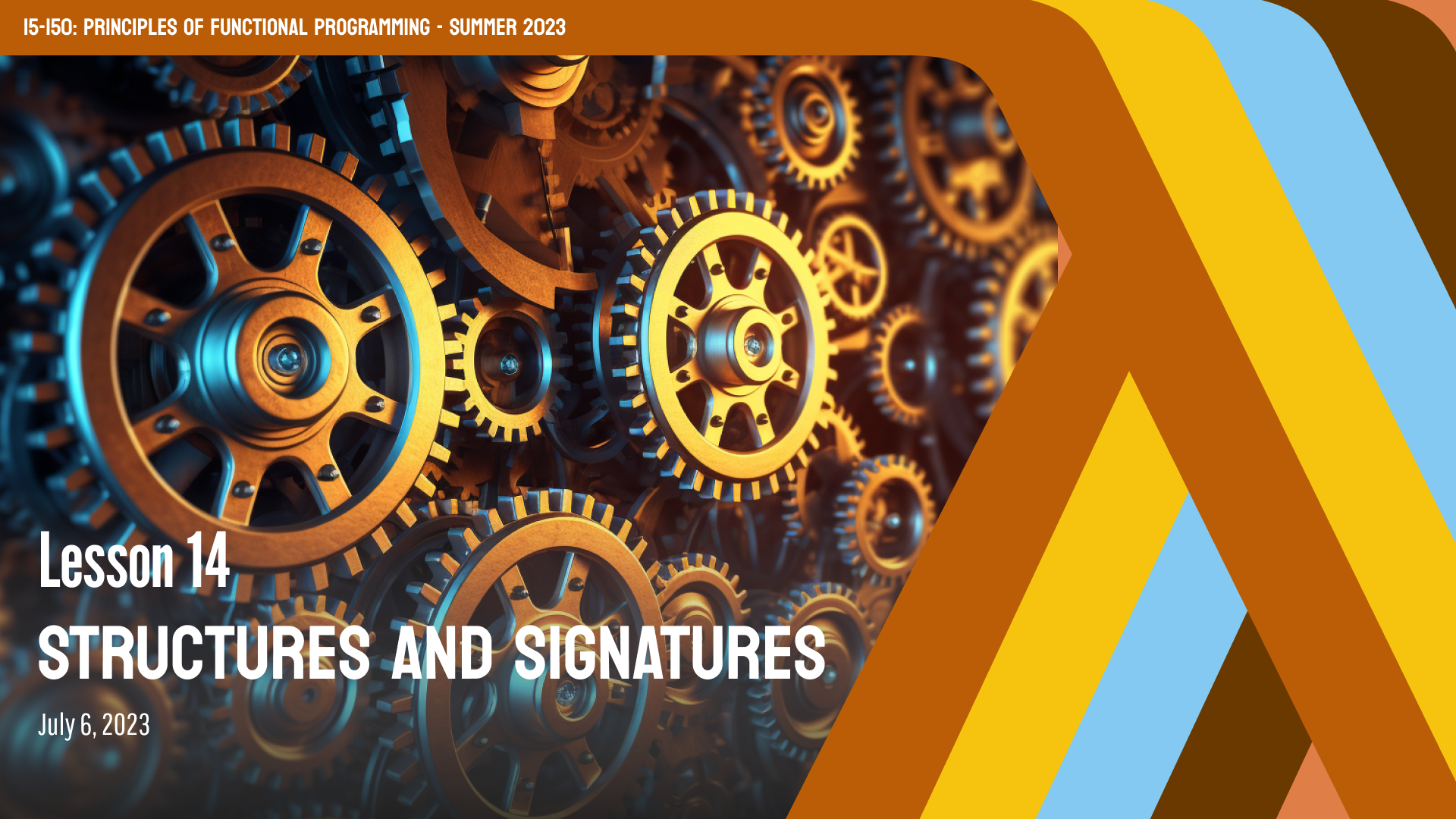Lecture 14 - Structures and Signatures
In this course, so far we have been implementing simple and not-so-simple functions that stand for themselves for the most part, and which solve well-defined problems that have been handed to you, for the most part.
Computer science is often a collaborative art, and in particular, when producing software, such well-defined structure does not always exist. The problem of software engineering is determining how to produce such well-architected code, which remains both easy to maintain and clear to its readers.
This lecture introduced SML's sophisticated module system, which entails a language of structures, which are constructs that may store exceptions, datatypes, and values, the things that we have been working so far in the course. We also saw that we could use signatures to denote the interface of such modules, which is akin to a "type" that describes the contents of a given module.
These structures are important because they exhibit information hiding, which lets us cleanly separate the boundaries between areas of a codebase, by defining well-specified interfaces between them, using the language of types and values.
We saw how we could use opaque ascription and transparent ascription to control the degree of information hiding, the former allowing us to define abstract types whose definitions are unknown to users, something which grants us great strength by forbidding the breaking of abstraction, and in particular, implementation invariants.

